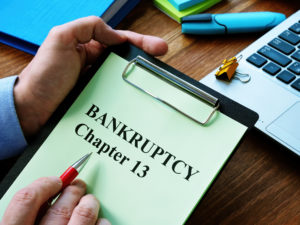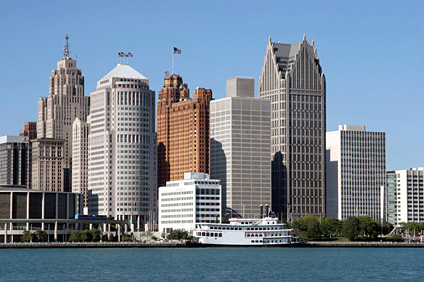Contents

Chapter 13 bankruptcy is the best consolidation of debt you’ll ever get. It doesn’t require negotiation with the creditors holding your unsecured debt, can save your home from foreclosure, can help you repay your tax debt without interest or penalties and protects you from creditor collection activity for as long as 5 years.
A Chapter 13 bankruptcy is a long process for anyone. Generally ranging from 3 to 5 years, a Chapter 13 represents a significant piece of your life wholly dedicated—financially, anyway—to the end-goal of ridding yourself of debt.
The good news is that the Chapter 13 bankruptcy process does eventually end.
It may be hard to believe when you are initially considering filing for bankruptcy, but the lengthy Chapter 13 process will indeed come and go and faster than you think.
This article will discuss the steps that a Chapter 13 bankruptcy case as it finally winds down, discharges, and closes.
First, however, let’s review the Chapter 13 process prior to conclusion.
The Chapter 13 Bankruptcy Process: A Brief Overview
A reminder of the full Chapter 13 bankruptcy process is helpful to understanding what happens and why at the end of the case.
A Chapter 13 bankruptcy case is initiated with the filing of a bankruptcy petition (with associated schedules, exhibits, statements, and Means Test) and a Chapter 13 Plan.
The Chapter 13 Plan governs the rules of the road for the Chapter 13 process. It is a lengthier document here in the Eastern District of Michigan than it is in the Western District of Michigan or elsewhere in the country.
The Plan provides:
- The length of the Chapter 13 process (36-60 months, depending upon the Means Test and many other factors);
- The amount of the payment that the debtor will make each month to the Chapter 13 trustee;
- The order in which creditors and other parties are paid by the Trustee with those funds;
- And any other “rules” with which the parties must comply once the Plan is “confirmed” (approved) by the Bankruptcy Court.
This Chapter 13 Plan is something that you draft with your bankruptcy lawyer and then file with the court.
The first few months afterward are known as the “pre-confirmation” process. During this time, your lawyer will argue about the Plan’s provisions with creditors, with the Chapter 13 Trustee, and with any other party in interest who wants to argue about it.
Frequently, creditors do not. Instead, they file a document called a “proof of claim” with the Bankruptcy Court.
This proof of claim is a form stating how much you owe them and what sort of debt it is (secured vs. unsecured, priority vs. non-priority). It is also supposed to divulge the identity of the real holder of the promissory note underlying the debt, although—especially as regards mortgage debts—it does not.
Proof of claim fraud is rampant, and it largely goes unpunished in the Eastern District of Michigan.
Your lawyer can file objections to these proofs of claim forms—and regularly will do so, unless you are working with a high-volume, low-staffed “bankruptcy mill.”
Once the arguments over the Plan and proofs of claim are all resolved, the Plan will be approved (in most cases—otherwise, the case is dismissed) at a “confirmation hearing” before the judge. (A great many Chapter 13 plans are confirmed by stipulated agreement, in which case there is no need to attend an actual hearing for this.)
A lot goes on in the pre-confirmation Chapter 13 process. It is the period of time in which most of the “action” in the case occurs.
Once the case enters the “post-confirmation” process, the arguing largely ceases.
Instead, you simply comply with the requirements of the Chapter 13 Plan. Every month and every year, for the Plan’s full length.
In most cases, this simply means that you make the required Plan payment on time and in the right amount and that you turn over your tax return each year to your bankruptcy lawyer, who will provide it (as required always) to the Chapter 13 Trustee.
In Detroit, if you are not paying 100% of your debt off in the Chapter 13 Plan (one needn’t, except in certain cases), you will also have to turn your Federal tax refund over to the Chapter 13 Trustee each year.
If your income or expenses change permanently, you and your bankruptcy attorney will work to modify the Plan accordingly.
If you have a sizeable one-time expense, you may move to retain some or all of a tax refund.
Throughout the 3-5-year process, your attorney will conduct bi-annual audits or reviews of your Plan to ensure that payments are current. Your attorney will also ensure that tax returns and tax refunds have been properly turned over, and that creditors with “must pay” claims (mortgages, tax debt, etc.) have filed proofs of claim and are being properly paid.
If creditors misbehave during the course of the Plan, your lawyer will send cease and desist communications to them. If they fail to do either, your lawyer will file motions for contempt and sanctions.
Presuming that any change to your income or expenses isn’t total, necessitating a voluntary dismissal of the Chapter 13 or a conversion to Chapter 7 bankruptcy, after the required number of months, your Chapter 13 process will conclude.
What happens then?
The Process of Concluding a Chapter 13 Bankruptcy Case
It should be noted firstly that the process described below is exclusive to the Eastern District of Michigan Bankruptcy Court. This includes cases filed in the Detroit bankruptcy court (including Ann Arbor and Monroe), in the Flint Bankruptcy Court, and in the Bay City bankruptcy court.
Bankruptcy Courts in Lansing, Grand Rapids, Kalamazoo, Traverse City, and elsewhere in the other half of the state follow possibly different procedures. Certainly, bankruptcy courts through the U.S. will follow their own procedures as well.
That said, once the final required Plan payment is made by the debtor, the Chapter 13 Trustee will file a “Trustee’s Notice of Final Cure Payment And Trustee’s Notice To Creditors Of Obligation To File A Response And Right To Object; And Notice Of Debtor Of Obligation To File Debtor’s Certification.”
This wordily-titled document is what it says it is:
- A notice to the debtor to file a certain notice related to domestic support obligations (see below);
- A notice to secured creditors to file a response stating whether or not the debtor has complied with the provisions of the Plan in repaying that secured debt;
- And a general notice by the Trustee to all parties of the completion of the Plan payment obligation.
It is a call to action, of sorts.
Secured creditors are obligated to file a response to this Notice within 21 days stating whether or not they agree that their claim has been properly paid and agreeing or disagreeing that the debtor is entitled to a discharge.
Within 28 days of the filing of this notice, the debtor must also file a “Certification of Domestic Support Obligation.”
This Certification is a statement of affidavit by the debtor as to whether or not the debtor owes a “domestic support obligation” such as child support, spousal support, or alimony. If this is the case, it also discloses whether or not that obligation is current or paid in full.
The debtor will not receive a discharge if this “DSO Cert” is not file or if a domestic support obligation is in arrears.
The debtor is also required to complete a Personal Financial Management Course before the Judge can issue a Bankruptcy Discharge Order.
If the responses to the Trustee’s Notice are timely filed and do not present any issues, the debtor will receive a discharge a few weeks after the deadline dates presented in the Notice expire.
Once the discharge is issued, the Chapter 13 case will remain administratively open for a number of months.
Approximately two months after the discharge is issued, the Trustee will file a “Final Report and Account,” which is postal-mailed to all parties in the case.
This Final Report details the flow of money through the Chapter 13: how much was paid by the debtor and which parties received how much. It also details the amount of each claim that was NOT paid by the Trustee.
Thus, if any claim is non-dischargeable—such as a student loan—the debtor will be able to use this Final Report to measure the accuracy of any post-Chapter 13 collection demand received from any such creditor.
About a month after this Final Report is issued, the Bankruptcy Court will finally administratively close the case.
And you are done.
Chapter 13 Bankruptcy Case Conclusion: The Bottom Line
The bottom line is that, to successfully reach the conclusion of a Chapter 13 bankruptcy case, you need an experienced and zealous attorney working on your side.
Attorney Walter Metzen is a Board Certified Bankruptcy Expert who has successfully assisted Detroit-area clients complete Chapter 13 bankruptcy cases for over 28 years.
Contact us now to schedule your free consultation.




